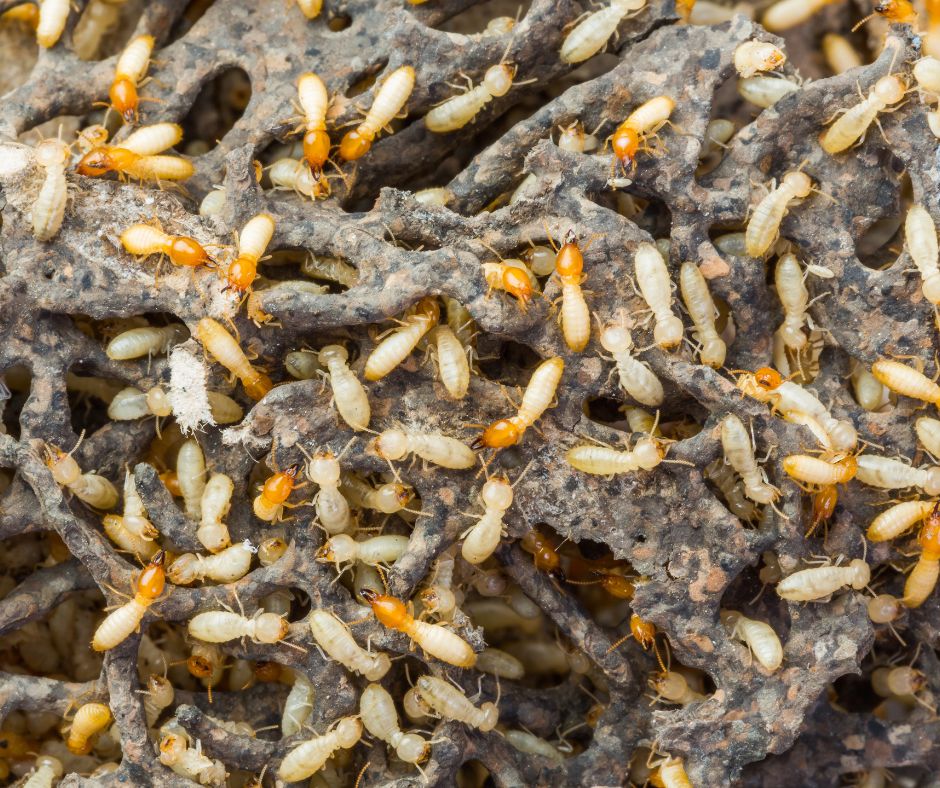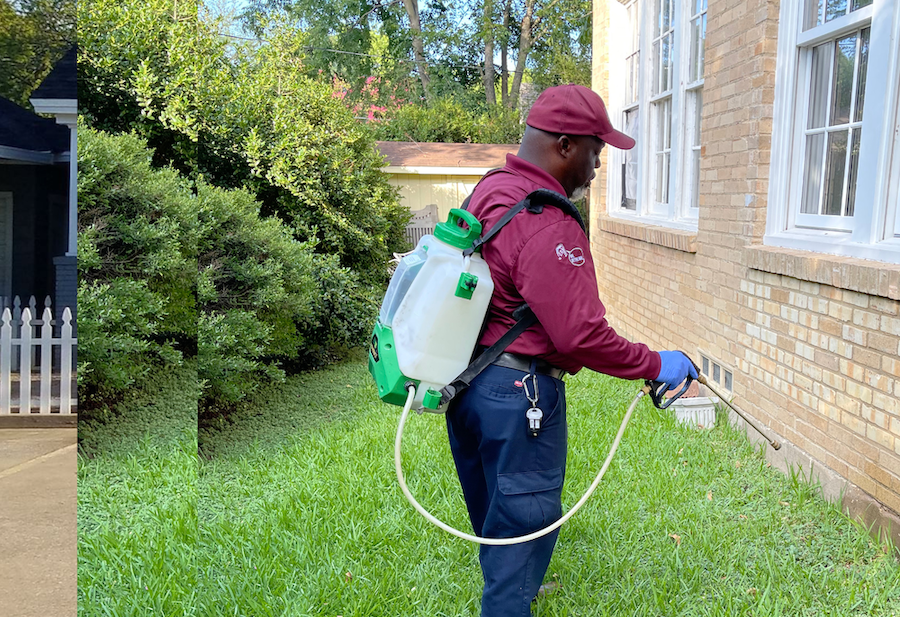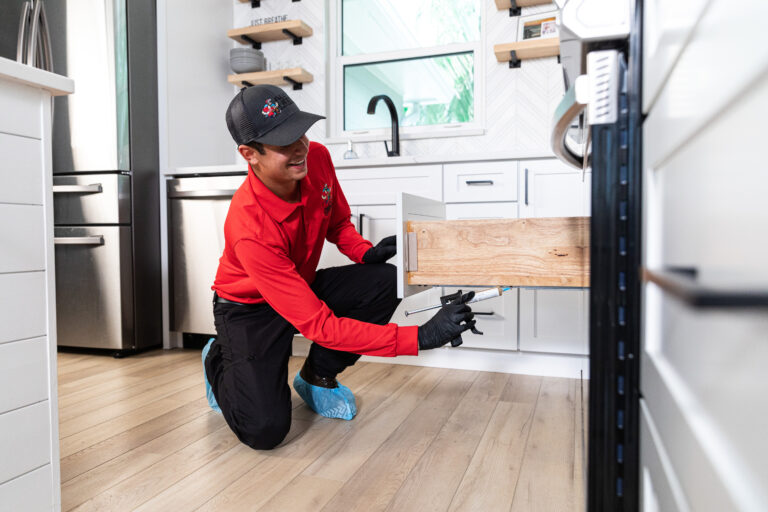Expert Mosquito Control Services for a Relaxed Outdoor Living Space
Find Out About the current Developments in Insect Control and Just How to Apply Reliable Therapy Solutions
In recent times, the field of bug control has experienced significant developments, driven by the need for effective and sustainable therapy remedies. Innovative approaches such as Integrated Parasite Administration (IPM) combine green experiment sophisticated technology, improving both efficacy and environmental duty. Furthermore, the combination of clever modern technologies and do it yourself methods has actually encouraged individuals to tackle parasite issues better. As we check out these growths, it comes to be important to comprehend exactly how ideal to execute these methods in numerous settings to accomplish optimal outcomes. The implications for bug management techniques could be transformative.
Eco-Friendly Pest Control Options
In recent times, the need for eco-friendly parasite control options has risen as organizations and house owners alike seek sustainable choices to typical chemical therapies. This shift is driven by expanding ecological awareness and a desire to lessen the health and wellness threats connected with synthetic pesticides.

Environmentally friendly bug control techniques incorporate a variety of methods that prioritize using all-natural compounds and techniques. Integrated Bug Management (IPM) is one such approach, combining organic, social, and mechanical techniques to take care of parasite populations while minimizing dependence on chemicals (Wildlife removal services). This alternative approach stresses avoidance with environment manipulation and the intro of natural predators, consequently fostering a well balanced community
One more popular option is the use of herb chemicals stemmed from plants, which often tend to be much less damaging to non-target microorganisms. Products like neem oil and diatomaceous earth have gained traction for their performance in regulating pests while positioning minimal risks to human wellness and the setting.
Additionally, exemption methods, such as securing access factors and maintaining tidiness, play an essential role in eco-friendly pest management. By taking on these lasting techniques, people and services can effectively manage pests while promoting a much healthier planet for future generations.
Smart Modern Technology in Insect Administration
Advancement is reshaping the landscape of parasite administration, with wise innovation becoming an essential force in enhancing performance and effectiveness - Wildlife removal services. The integration of Web of Points (IoT) gadgets, synthetic intelligence (AI), and data analytics is reinventing how pest control professionals approach problems
Smart traps equipped with sensors can identify parasite activity in real-time, sending out prompt alerts to drivers. This enables for timely actions, minimizing damage and lowering the demand for substantial treatments. Additionally, AI algorithms analyze historical data to forecast bug behavior, making it possible for positive interventions based upon environmental conditions and infestation patterns.
Drones and automated automobiles are likewise playing a considerable role in bug management, supplying airborne assessments of huge locations, determining hotspots, and also distributing targeted therapies. These technologies not just improve operations however additionally boost safety by restricting human direct exposure to possibly hazardous chemicals.
Moreover, mobile applications encourage consumers to check insect task and gain access to expert recommendations, fostering a joint technique to pest management. Overall, the adoption of smart modern technology is establishing a brand-new criterion in pest control, stressing data-driven decisions and sustainable practices that ultimately profit both house owners and specialists alike.
Integrated Insect Monitoring Approaches
Integrated Bug Monitoring (IPM) employs an all natural strategy to pest control, combining various approaches to efficiently take care of pest populaces while reducing threats to human wellness and the setting. IPM focuses on understanding the pest life process, their all-natural opponents, and the environment in which they prosper.
One of the basic elements of IPM is checking pest populations via normal examinations and information collection. This permits for the identification of pest thresholds, figuring out when treatment is essential. Cultural techniques, such as plant environment, sanitation, and turning control, are vital in lowering pest prevalence and promoting plant health.
Mechanical controls, consisting of obstacles and catches, are also crucial in IPM. These techniques can physically get rid of or hinder bugs without making use of chemicals. When necessary, the judicious application of chemical controls is utilized, focusing on targeted treatments that reduce ecological impact.
Education and partnership among stakeholders, including farmers, pest control specialists, and the area, are vital for the effective execution of IPM approaches. By prioritizing sustainable techniques, IPM not only addresses pest issues however likewise fosters a much healthier ecological community.
Biological Control Techniques
Numerous biological control approaches are discover here progressively acknowledged for their efficiency in taking care of insect populaces while promoting ecological balance. These methods harness all-natural killers, parasites, and microorganisms to lower pest numbers without relying upon artificial chemicals. The introduction of ladybugs can successfully manage aphid populations, while nematodes target soil-dwelling bug larvae.
Furthermore, making use of microbial pesticides, such as Bacillus thuringiensis (Bt), supplies an ecologically friendly alternative for handling caterpillar parasites. These items particularly target pest varieties, lessening injury to advantageous pests and pollinators. Conservation biological control stresses improving habitats for all-natural enemies, such as birds and valuable insects, consequently encouraging their visibility in farming systems.
Research remains to disclose ingenious approaches within this field, such as using pheromones to disrupt pest mating patterns or the advancement of biocontrol representatives through genetic engineering. Carrying out these methods can cause lasting parasite monitoring methods that alleviate the reliance on chemical interventions, eventually cultivating healthier environments. As awareness of these strategies grows, they are coming to be essential parts termite traps of incorporated insect administration (IPM) techniques, offering a balance in between effective bug control and ecological stewardship.
DIY Insect Control Solutions
As home owners seek efficient ways to tackle pest problems, DIY insect control options have actually gained popularity for their ease of access and cost-effectiveness. These techniques empower people to resolve invasions making use of easily offered products and techniques, commonly without the need for expert intervention.

In addition, maintaining proper sanitation and regular assessments can stop parasite entrance and nesting (Wildlife removal services). Simple methods, such as sealing cracks, eliminating food resources, and decluttering, can dramatically lessen bug populations. Traps, both homemade and readily readily available, can additionally provide effective remedies for tracking and regulating particular insects like rats or bugs

Conclusion
The assimilation of environment-friendly bug control options, smart modern technology, and ingenious monitoring strategies provides a comprehensive approach to efficient parasite monitoring. By embracing Integrated Bug Monitoring (IPM) and making use of organic control methods, alongside Do it yourself services, lasting and accountable insect control can be attained.
Eco-friendly insect control techniques incorporate an array of methods that prioritize the usage of natural compounds and techniques. Integrated Insect Administration (IPM) is one such strategy, combining biological, social, and mechanical techniques to handle pest populations while lowering dependence on chemicals. As understanding of these methods expands, they are coming to be indispensable components of integrated pest monitoring (IPM) strategies, using an equilibrium between reliable have a peek at this site parasite control and ecological stewardship.
The assimilation of environment-friendly insect control options, wise modern technology, and ingenious management approaches presents an extensive technique to efficient insect management. By welcoming Integrated Insect Administration (IPM) and utilizing organic control techniques, together with DIY services, liable and sustainable pest control can be accomplished.